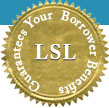 |
| By Elizabeth Brokamp |
 |
Everyone knows that an IRA is a great way to save for retirement, but there are lesser-known (but very important) facts that may have escaped your attention. Read on for five myths about IRAs that may be affecting your bottom line.
Myth: You can't touch the money in your IRA until you are 59 1/2.
Truth: The truth is that there are exceptions to every rule. For a Roth IRA, for example, you can withdraw the contributions any time tax- and penalty-free; it's the earnings on the contributions that you can't touch without paying taxes and a 10% penalty. For both traditional IRAs and Roth IRAs, you can take out money penalty-free (though you still pay taxes on the earnings) for a first-time home purchase, certain qualified higher-education expenses, and for something called the SEPP (Rule 72T), a whole other ball of wax that you can read about in this article by The Motley Fool's Dave Braze.
Myth: Other than a company match, there's really no difference between an IRA and a 401(k).
Truth: The most important difference between the two is that an IRA offers you more investment choices and, if you open an account with a discount broker, you'll pay a lot less, too. With most 401(k)s, participants are limited to a handful of mutual funds. Another downside is that the expense ratios on funds in 401(k)s are often higher than if you bought them outside the 401(k) plan. Last, but not least, you may have read a lot of stories recently about the hidden fees for 401(k)s. You may be paying a lot more than you think.
Myth: The annual fees for your IRA must be taken out of your assets.
Truth: The company that manages your IRA may automatically take your annual fees out of your assets, but you can also choose to pay them separately by sending a check. Paying separately leaves more assets in your account, which will, in turn, increase the amount of money you have for retirement. Plus, these fees are considered investment expenses that can deducted to the extent that they, along with all your other miscellaneous deductions, exceed 2% of your adjusted gross income.
Myth: You can't use an IRA to buy a home or a business.
Truth: IRA funds can be used to buy investment properties, but not the house you live in. They can also be used to purchase an ownership stake in a business, but you are prohibited from controlling it. Although it's possible to use your IRA funds for these types of purchases, it can be complicated, time-consuming, and harmful to your net worth by leaving you under-diversified.
Myth: You can no longer contribute to an IRA for 2006.
Truth: You have until April 17, 2007, to make a contribution for 2006 so get busy and write that check. Your 65-year-old self will thank you for it.
Regardless of whether you participate in an IRA, 401(k), or both, make sure you are contributing regularly to your future. The final, resounding truth? The more you save now, the better off you will be in retirement.
This article is adapted from the Motley Fool Green Light "Money Answers" archive, which features more than 100 articles on personal finance topics ranging from taxes to credit to beginning investing, organized by subject and life stage. For access to this content — plus the current newsletter, back issues, members-only discussion boards, and advisor blogs — take a free 30-day trial today!
Fool contributor Elizabeth Brokamp is a licensed professional counselor with a special interest in Robert Brokamp, editor of The Motley Fool's Rule Your Retirement newsletter.
This feature may not be reproduced or distributed electronically, in print or otherwise without the written permission of uclick and Universal Press Syndicate.
|
|
 |













 Lowering your monthly payments helps to protect you in case your financial situation changes. Even if you are not having any trouble with your payments now, who knows what the future will bring?
Lowering your monthly payments helps to protect you in case your financial situation changes. Even if you are not having any trouble with your payments now, who knows what the future will bring?
